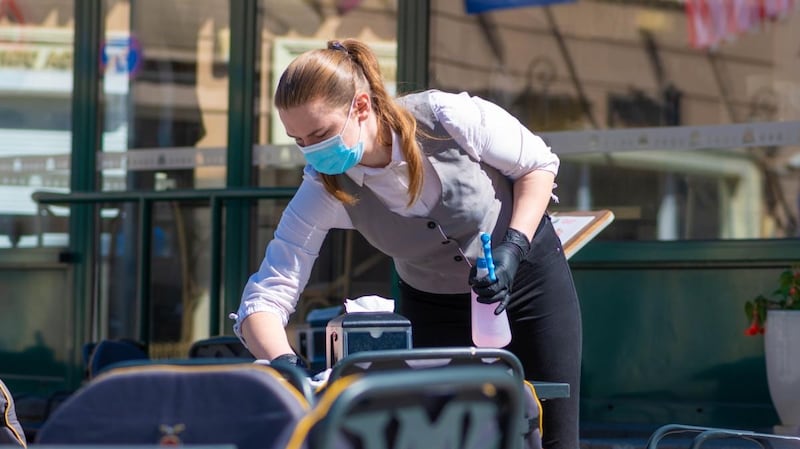The Government took one look at the damage that a move to Level 5 restrictions would have caused to the economy and decided not to go there. Not yet anyhow.
As moving to Level 4 would have caused almost as much damage – involving the closure of many sectors and hundreds of thousands of people being laid off – it instead decided to put the entire country on Level 3.
Many business owners – worried about imminent closure – will be breathing a sigh of relief. But all will now be worried that tighter restrictions remain possible, if the virus numbers do not come into line.

Could the Government say no a second time to the National Public Health Emergency Team (NPHET) in a few weeks’ time, if the virus numbers continue to rise?
Damage
There will be some economic damage to the hospitality sector as it moves to Level 3 nationwide, and not just in Dublin and Donegal. On the assumption that this means an end to indoor dining, as it has in the two counties already at Level 3, the Restaurant Association of Ireland estimates that 180,000 people will be laid off.
A close watch will now be kept on the numbers on the pandemic unemployment payment (PUP) to watch the trends over the next couple of weeks.
Had the country moved to Level 5 as NPHET suggested, the hit to the jobs market would have been really hard. At its peak, there were 600,000 people on the PUP, and this has now fallen to 217,000. A Level 5 – or even Level 4 – closure could have seen the numbers head back towards their original peak, depending on which sectors were deemed essential and allowed to remain open.
The lower level of wage subsidy now available would have left it impossible for many companies to hold on to staff in the wake of a new shutdown, business sources believe.
Recent research from both the Central Bank and the Economic and Social Research Institute (ESRI) have shown how many SME balance sheets are now under severe strain, with cash reserves low or used up. Despite Government supports, many would simply not make it through another lockdown.
Direction
So the stakes in the weeks ahead are high and it is clear in what direction the debate will go if a wider lockdown does come back on to the agenda. On Sunday evening, after reports of the NPHET call to move to Level 5 emerged, there were demands for new supports for business, for a restoration of the PUP to its former level and for help for those on mortgage breaks, now running out for many people after six moths.
As it is, the Government will face demands from the hospitality sector for more support in the budget. The calls for a lower VAT rate for the sector may now be politically irresistible.
It all sets a difficult backdrop for next week’s budget, though the mood will be framed by how Covid-19 infection figures move in the meantime and whether talk of further restrictions remains live.
Contingencies
The Government has already indicated it plans to put money aside in a “recovery fund” for 2021 to account for contingencies related to Covid-19 and Brexit. The threat of Level 5 restrictions – albeit passed for now – shows how it will need to have money on standby to ramp up supports, at potentially significant cost, if the virus numbers do not come back on track.
Last week Minister for Finance Paschal Donohoe warned that the recovery could be interrupted as restrictions came and went over the next year.
Little did he, or any of the rest of us, know then how quickly that threat would appear.
The pre-budget figures facing him and Minister for Public Expenditure Michael McGrath look a bit better than anticipated. But the cost of supporting the economy through further restrictions could quickly use up any spare cash. And the latest episode again raises the fundamental question – vital for economic recovery as well as society – of how we can find a way of living with the virus.












